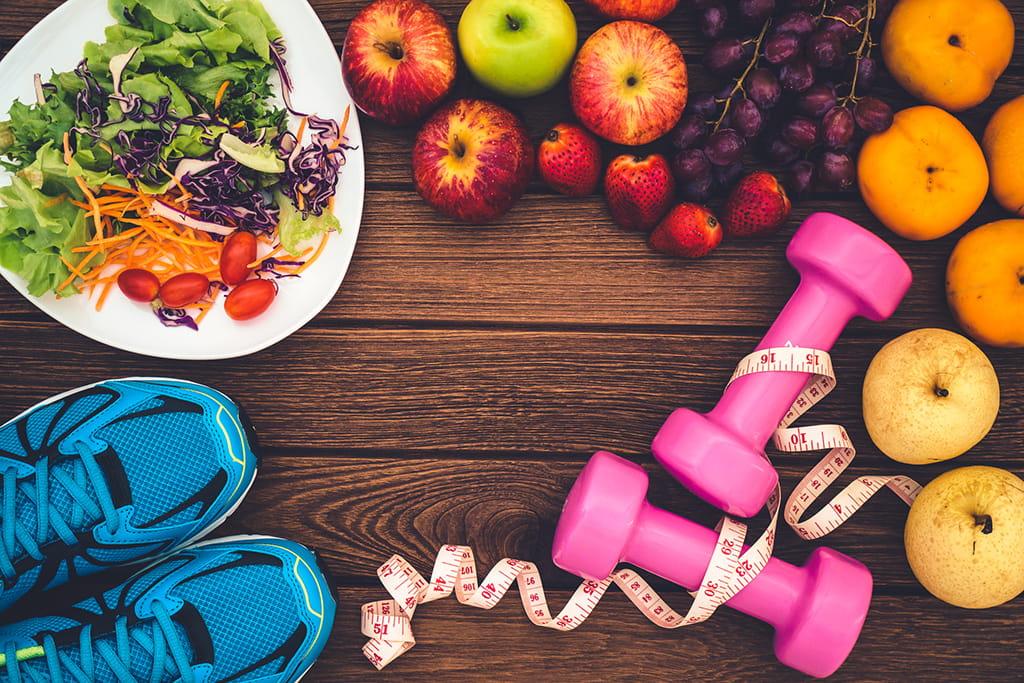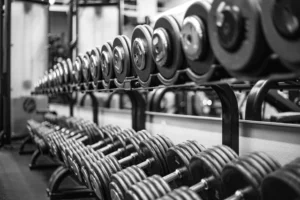
Most diets rely on creating a negative energy balance to lose weight. This means that the body is taking in less than it needs, so it uses the energy we have stored, such as glycogen, fat, and muscle protein. Humans require a certain amount of calories each day just to support necessary functions like regulating heart rate, controlling our breathing, digesting food, and other automatic processes. This bare minimum of energy we need to support these life-preserving functions is known as our basal metabolic rate. Believe it or not, even as we sleep, we are burning as many calories as when we are sitting down and watching television.
So, are all calories the same? Is eating a 400-calorie donut the same as eating 400 calories worth of fish? If you are trying to lose weight, this would mean you could eat pretty much anything you wanted as long as you stayed within your calorie range. I mean, it would not be healthy, but you would lose weight. Like most other topics I have researched, there is much debate in the scientific community about whether losing weight is strictly about minimizing calories or whether the percentage of protein, carbohydrates, and fat you eat is just as important. Unfortunately, there are few long-term randomized studies addressing this issue, but I will use what we have thus far.
Some studies have found that a low-carbohydrate, high-protein diet offered greater weight loss than a low-fat diet, even when both groups consumed equal calories and started the study at similar weights. These studies would seem to suggest that it is not just calories that induce weight loss; macronutrient intake (protein, carbs, and fat) also plays a major role. There are a few ways in which different macronutrient intakes could promote different amounts of weight loss.
Metabolizable Energy
Metabolizable energy is the difference between the energy of food (calories) and the energy that we lose as heat or in feces and urine (1). It is also the amount of energy from the foods that are available for our body to turn into ATP, which is the power source for all of our bodily processes (1). Currently, there are known values for the metabolizable energy of the macronutrients created by Atwater (1). If an energy source, say protein, was eaten and only a few of those calories were available for our body to turn into ATP, and we compared it to the same calories as carbohydrates but with more calories available for our body to turn into ATP, over time we would lose more weight on the protein diet since our body is not utilizing it as much as the carbs.
There are two main problems with Atwaters. First, it is assumed that the amount our intestinal tract absorbs from different macronutrients remains constant. In a vacuum, this may be true, but when you eat fiber with food, the amount of fat, nitrogen, and energy that you excrete are all increased (1). This means two people are eating the exact same foods as each other, but one person is taking a fiber supplement. The person with the added fiber will excrete more and thus reduce the amount of calories absorbed by the body.
The other main problem was the finding that after eating peanuts, the fecal excretion of fat increased by 15% (1). The same finding was discovered when using almonds instead of peanuts. This is explained by some of the lipids passing through our digestive tract without being broken down.
Calorie Sources and Energy Expenditure
A study assigning subjects to either a high-protein pork diet, a high-protein soy diet, or a high-carbohydrate diet found that despite their lower overall energy intake, both of the high-protein groups saw a 3% higher 24-hour energy expenditure (2). This shows that total energy consumed is not the only factor that affects energy expenditure. An increase in protein turnover may account for up to 68% of the acute thermogenic effect of protein consumption (2). Protein turnover refers to the balance between the building of and breaking down of bodily proteins. It requires a lot of energy to build protein.
A mixed meal high in protein was shown to cause an 11%–14% increase above the resting metabolic rate post-consumption (1, 3). When the effects caused by the ingestion of single macronutrients are measured, protein produces a much greater response in energy expenditure than carbohydrates or fat (1, 4, 5).
Thermogenic Effects of Food
The thermogenic response causes the release of metabolizable energy as heat, which would leave it unavailable for our body to use as ATP. Although this seems to be the reason why high-protein diets cause more weight loss, the thermogenic increase would only result in an additional loss of about 42 calories per day (1). This cannot be the only factor involved if high-protein diets do, in fact, cause more weight loss than high-carbohydrate or high-fat diets.
After we eat a food, our body expends energy to break it down and absorb it, referred to as the thermic effects of food (TEF). This process accounts for 10–15% of our total daily energy expenditure (1). It was found that different macronutrients were able to influence the TEF. High-protein meals were found to cause a greater thermogenic response than equal-calorie high-carbohydrate or high-fat equivalents (1, 2, 6). When mixed macronutrient meals were consumed that were high in fat, protein, or carbohydrates, the thermic effect of food over a 7-hour period was an average of 261 for protein, 92 for high-carbohydrate meals, and 97 for high-fat meals (1, 2).
Humans, like other mammals, must keep a constant core temperature of 98.6°C, no matter how cold it is outside. Generating internal heat, like shivering when it is cold, is the basis of thermogenesis (7). We humans have a much higher resting metabolic rate than reptiles, which are cold-blooded and adapt to whatever temperature they are at or sit in the sun to warm up. We therefore require a great deal of external energy every day just to stay warm, which comes in the form of calories from food. Reptiles can go long distances without needing food (crocodiles can go a year without eating). Put simply, thermogenesis is the production of heat.
A study involving healthy women that compared the thermogenic effects of either a high-protein, low-fat diet or a low-fat, high-carbohydrate diet found that meal-induced thermogenesis measured after meals was twofold higher in the high-protein versus the high-carbohydrate diet (8). After eating protein, there is a rapid increase in the REE (similar to our resting metabolic rate), which is maintained for up to 4 or 5 hours following the meal (9). On the other hand, high-carbohydrate meals have been shown to cause a smaller rise in the REE, which is only maintained for 1-2 hours after the meal (9).
Believe it or not, but thermogenesis has been shown to be increased just by the mere sight, taste, and smell of food (10). The palatability of food also seems to increase thermogenesis. In a study of subjects eating 43 grams of beef protein versus 43 grams of protein from cod, it was found that the beef was rated as more palatable and that it also increased thermogenesis more than the fish (10).
A reason why protein would increase thermogenesis over carbohydrates is because our body has no long-term storage capacity for protein, so it would have to be processed right away (10). The synthesis of protein, the high energy cost of making peptide bonds, and the high energy cost of making urea may all contribute to the increase in thermogenesis (10).
Gluconeogenesis
Gluconeogenesis is when the body forms glucose (a sugar) from non-carbohydrate precursors (11). This may partly explain why high-protein diets have been shown to increase energy expenditure in humans. If we are following a low-carbohydrate, high-protein diet, our body may be forced to convert the protein into glucose (gluconeogenesis) since our dietary intake of carbohydrates is low (11). It takes a lot of energy to convert protein into glucose, so our energy expenditure would obviously rise (11).
One study measured gluconeogenesis in individuals in either a high-protein, low-carbohydrate group or a normal protein group (11). On average, the high protein group produced 26 grams of extra glucose through gluconeogenesis, which led to an increase in energy expenditure (11). The increased gluconeogenesis contributed to 42% of the rise in energy expenditure (11).
Protein elicits more of an energy cost (23%) to be digested, absorbed, and metabolized than either carbohydrates (6%) or fats (3%). The oxidation of amino acids, especially when present in abundance, can contribute to the thermic effects of proteins (12). Our body must oxidize excess amino acids as it has nowhere to send them, and this requires energy.
Conclusion
The studies seem to support the idea that protein causes us to burn more calories than an equal amount of carbohydrates or fat. This is backed up by the fact that protein has no long-term storage, so it must be used; it is costly in energy to break down and utilize; and it increases thermogenesis. The main issue is finding out if this increase in calories burned is high enough to lead to weight loss.
Although a high-protein diet may burn additional calories, an overall low-calorie diet, whether high in carbohydrates, fats, or proteins, would still create a negative energy balance and help you lose weight. If you increase the amount of protein you take in, you will obviously need to adjust your intake of carbs or fats, so be mindful of consuming adequate carbohydrates. I would not advise eating a very high-protein diet just to lose weight.
A substantial amount of carbohydrates are needed in the diet to get all of the vitamins, minerals, and antioxidants that plants have to offer, so don’t skip out on them. While weight loss is great, we must also think about long-term health, so focus most on consuming a low-calorie but varied and healthy diet. Eating a high-protein and high-animal diet may cause more long-term damage (heart disease, cancer), which overrides any health benefit achieved through weight loss.
Sources
1. Hollis, J. H., & Mattes, R. D. (2005). Are all calories created equal? Emerging issues in weight management. Current diabetes reports, 5(5), 374-378.
2. Mikkelsen, P. B., Toubro, S., &Astrup, A. (2000). Effect of fat-reduced diets on 24-h energy expenditure: comparisons between animal protein, vegetable protein, and carbohydrate. The American journal of clinical nutrition, 72(5), 1135-1141
3. Crovetti, R., Porrini, M., Santangelo, A., &Testolin, G. (1998). The influence of thermic effect of food on satiety. European journal of clinical nutrition, 52(7), 482-488
4. Karst, H., Steiniger, J., Noack, R., &Steglich, H. D. (1984). Diet-induced thermogenesis in man: thermic effects of single proteins, carbohydrates and fats depending on their energy amount. Annals of nutrition and metabolism, 28(4), 245-252.
5. Steiniger, J., Karst, H., Noack, R., &Steglich, H. D. (1987). Diet-induced thermogenesis in man: thermic effects of single protein and carbohydrate test meals in lean and obese subjects. Annals of nutrition and metabolism, 31(2), 117-125
6. Robinson, S. M., Jaccard, C., Persaud, C., Jackson, A. A., Jequier, E., &Schutz, Y. (1990). Protein turnover and thermogenesis in response to high-protein and high-carbohydrate feeding in men. The American journal of clinical nutrition, 52(1), 72-80.
7. Clapham, J. C. (2012). Central control of thermogenesis. Neuropharmacology, 63(1), 111-123.
8. Johnston, C. S., Day, C. S., & Swan, P. D. (2002). Postprandial thermogenesis is increased 100% on a high-protein, low-fat diet versus a high-carbohydrate, low-fat diet in healthy, young women. Journal of the American College of Nutrition, 21(1), 55-61.
9. Soucy, J., & Leblanc, J. (1998). Protein meals and postprandial thermogenesis. Physiology & behavior, 65(4), 705-709
10. Halton, T. L., & Hu, F. B. (2004). The effects of high protein diets on thermogenesis, satiety and weight loss: a critical review. Journal of the American College of Nutrition, 23(5), 373-385.
11. Veldhorst, M. A., Westerterp-Plantenga, M. S., &Westerterp, K. R. (2009). Gluconeogenesis and energy expenditure after a high-protein, carbohydrate-free diet. The American journal of clinical nutrition, 90(3), 519-526.
12. Paddon-Jones, D., Westman, E., Mattes, R. D., Wolfe, R. R., Astrup, A., &Westerterp-Plantenga, M. (2008). Protein, weight management, and satiety. The American journal of clinical nutrition, 87(5), 1558S-1561S.




Really interesting and informative. Congrats on the blog, Rob!
Thanks! Please leave all the comments you want!
I enjoyed reading the crocodile fact, I didn’t know they can spend a year without food.
Like 2 months ago I ran a 5K race with a friend, and my friend’s friend that runs a lot recommended her for us to eat just pasta for dinner the day before the race. This article made me understand better the scientific facts why athletes eat more carbohydrates than protein, specially a day before an event; less energy for digestion. Like I mentioned on my other comments I kind of know the facts and theory but don’t really know the scientific detail behind it. I am learning a lot by reading your articles.
Certain reptiles like snakes and crocodiles can go a long time between meals. They tend to consume large animals every few months and have evolved to be sustained from those large meals for long periods of time. They also have insanely low metabolic rates meaning they do not use many calories to stay alive each day like humans do.
A lot of people know the facts but not the details and the studies that produced the facts. Or lack of studies. I believe you are referring to carbohydrate loading the day before a race. The idea is to eat as many carbohydrates as you can the day before a race. I forget how exactly it helps but people do it before a really long race like a marathon. For a 5 K it may not be necessary though.